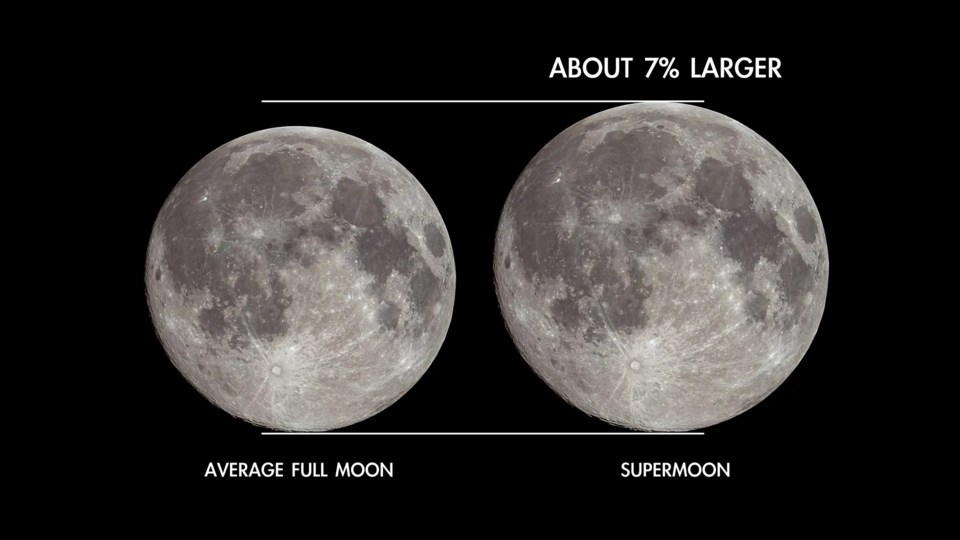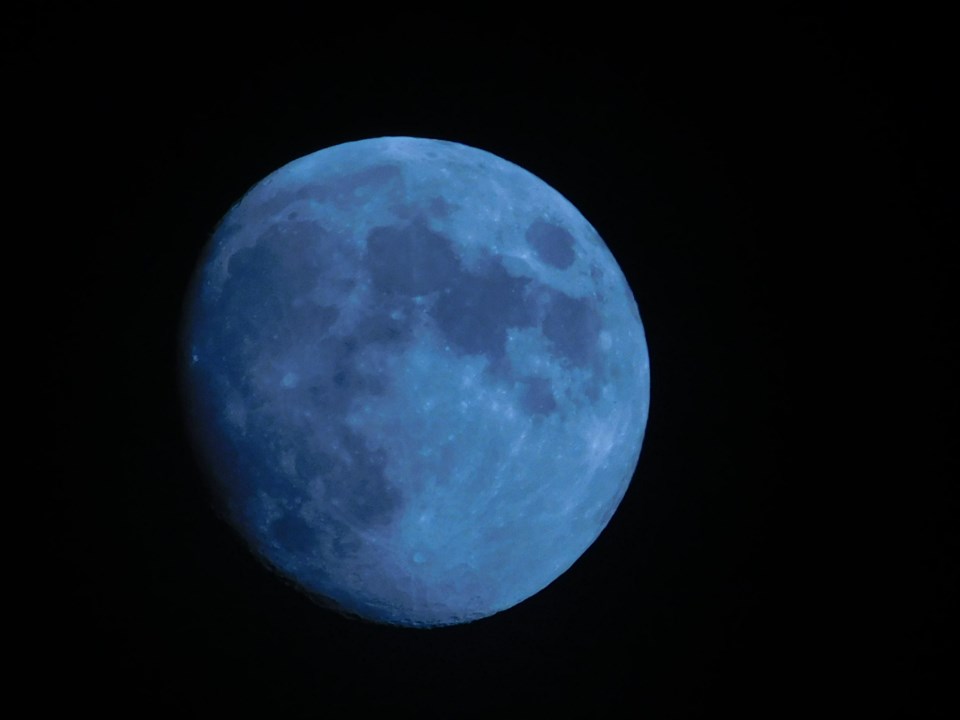The next full moon will rise on Wednesday, August 30th, and it will be one of the brightest and largest moons of 2023.
However, this isn't just your typical full moon, rather it's a "blue moon." Interestingly, the term blue moon actually has nothing to do with colour, but since the 1940s, it has commonly referred to the second of two full moons that fall in a calendar month; thus, Wednesday's full moon is defined as a blue moon because it is the second full moon of August.
Just like August's first full moon, the Sturgeon Moon which occurred on August 1st, the blue moon will also be a supermoon, meaning it will occur during a period when the moon is closer to the Earth, making it appear almost imperceptibly larger in the sky.
The second supermoon of the month will grace the Earth's orbit at an incredibly close distance of 357,344 kilometres, nearly 30,000 kilometres closer than the usual 384,400-kilometre average.

When can you see the super blue moon?
According to In the Sky, the super blue moon is set to make its appearance shortly after sunset, precisely at 7:10 pm EDT on Wednesday, emerging from the eastern horizon.
However, it's worth mentioning that this won't be the peak of its grandeur. The pinnacle of the full moon's magnificence occurs when it reaches the 180-degree mark when it is completely opposite our star in the sky over Earth.
In the case of this year's blue moon, this pivotal moment of opposition is scheduled for 9:36 pm EDT on Wednesday, as reported by NASA. During this instance, the moon will be positioned within the constellation of Aquarius. Subsequently, the blue moon is slated to descend below the horizon on Thursday, just before the sun rises, with an approximate time of 6:46 am, completing its ethereal journey for the night.
Tips for viewing the super blue moon
This prime viewing time promises optimal conditions for observing the supermoon's breathtaking splendour—provided the weather cooperates. Fortunately, the forecast for Wednesday night suggests clear skies, potentially granting stargazers an unobstructed view of this cosmic marvel.
-
Check the Timing: Find out the exact timing of the moonrise and moonset in your location. This will help you plan your viewing session and ensure you don't miss the moon's entrance or exit from the sky.
-
Location Matters: Choose a viewing spot with minimal light pollution. Ideally, head to a rural area or a high vantage point where the sky is clearer and darker. This will allow you to see more details and appreciate the moon's brightness better.
-
Bring Binoculars or a Telescope: While the super blue moon is larger and brighter than a regular full moon, using binoculars or a telescope can still enhance your experience by revealing craters, lunar seas, and other intricate features.
-
Capture the Moment: If you're into photography, bring your camera and a sturdy tripod. Longer exposure times can capture the moon's details and the surrounding landscape beautifully. Experiment with different settings to achieve the desired effect.
-
Be Patient: Sometimes clouds or haze can obstruct the view. Be patient and wait for breaks in the cover, as the moon might peek through intermittently.
The convergence of a blue moon and a supermoon is a lot rarer than either individual supermoons or blue moons. While the alignment of a super blue moon within a single month is a possibility, these occurrences can also be as widely spaced as two decades, according to NASA. The space agency has determined that the typical interval between super blue moon stands at approximately a decade.
Looking ahead, the upcoming super blue moon following the one on August 30th, 2023, is anticipated in January 2037, with yet another gracing the skies in March of the same year, as outlined by NASA's projections.




